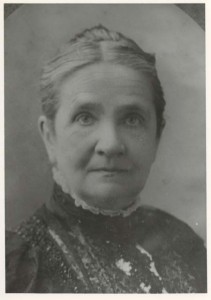 Born July 5, 1831
Born July 5, 1831
Birthplace Near Lyons, NY
Died January 28, 1905
Grave Site Grace Cemetery, Castile, NY
Contribution Physician, suffragist and philanthropist
Cordelia Agnes Greene was born near Lyons, New York on July 5, 1831. Her parents, Jabez and Phila Cooke Greene, were farmers from New England. Cordelia Greene was one of five children.
As a young girl, Greene was affected by the religious revivals then sweeping through upstate New York. Her parents, once Quakers (Society of Friends), had converted to Presbyterianism. Greene herself had a conversion experience which would influence her commitment to social causes throughout her life.
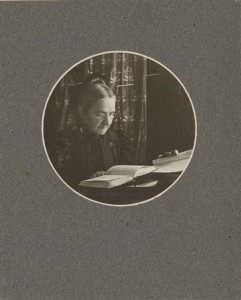 When she was sixteen, Greene earned her teacher’s certificate. She taught in country schools until her father opened a water-cure sanitarium in Castile, New York in 1849. At that time, the water cure (or hydrotherapy) was a popular treatment for a number of chronic diseases. It involved taking frequent baths and drinking lots of water, combined with outdoor exercise.
When she was sixteen, Greene earned her teacher’s certificate. She taught in country schools until her father opened a water-cure sanitarium in Castile, New York in 1849. At that time, the water cure (or hydrotherapy) was a popular treatment for a number of chronic diseases. It involved taking frequent baths and drinking lots of water, combined with outdoor exercise.
Greene quit teaching and went to work for her father as a nurse in the sanitarium. With the money she earned from this job, she was eventually able to pursue her dream of becoming a physician. She moved to Philadelphia and enrolled in the newly-opened Women’s Medical College of Pennsylvania, where she became their first student to receive a medical degree, in 1853. She continued her studies in Cleveland, where she graduated with honors from Cleveland Medical College (later Case Western Reserve) in 1856. One of the three women in her class was Marie Zakrzewska, who later went on to found the New England Hospital for Women and Children.Photograph of Cordelia Greene
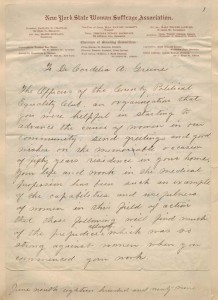
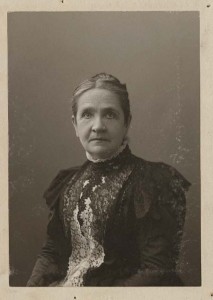 Greene returned to Upstate New York after her graduation and assumed a position as the assistant to Dr. Henry Foster, a fellow graduate of Cleveland Medical College who owned the water cure establishment in Clifton Springs. She worked there for six years, until her father’s death, when she returned to Castile take over his sanitarium at the suggestion of her brother. She was to hold her position as the medical director at the Castile sanitarium until shortly before her death, when her niece, Dr. Mary T. Greene, took her place.
Greene returned to Upstate New York after her graduation and assumed a position as the assistant to Dr. Henry Foster, a fellow graduate of Cleveland Medical College who owned the water cure establishment in Clifton Springs. She worked there for six years, until her father’s death, when she returned to Castile take over his sanitarium at the suggestion of her brother. She was to hold her position as the medical director at the Castile sanitarium until shortly before her death, when her niece, Dr. Mary T. Greene, took her place.
Cordelia Greene was a respected member of the medical community. She often gave lectures on preventive medicine, and at one point chaired the Educational Committee of the Woman’s Medical Society of New York State.Image of letter from E. Crossett to C. Greene A member of the American Medical Association (AMA), she served on the AMA’s Committee for Preventive Medicine. She was also a member of the New York State Medical Association, and served as president of their Wyoming County branch, which often held their meetings at her facility. One of her assistants at the Sanitarium, Dr. Clara Swain, was a sister graduate of the Woman’s Medical College of Pennsylvania who later went on to become a medical missionary in India, where she was to establish the first hospital for women in Asia. Greene wrote a book, The Art of Keeping Well: or, Common Sense Hygiene for Adults and Children, which was published in 1906, the year after she died.
Greene supported a number of reform causes throughout her life, including temperance and women’s suffrage. She was active in the Wyoming County Suffrage Image of booklet cover: Political Equality Club Association, and she served for many years as president of the local Political Equality Club. One year she refused to pay her taxes in order to protest her lack of the right to vote. She was also known as a generous financial donor to the cause of suffrage. She donated a $500 subscription, which was eventually used to help publish the History of Woman Suffrage.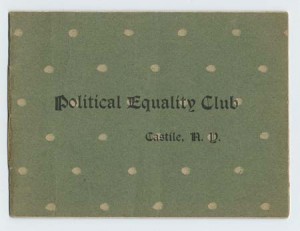
Greene was known for generosity and warmth in her private life and as a citizen of Castile as well. Image of letter from Anna Shaw Although she never married, she adopted six children, and her home and sanitarium became a popular resting spot for such famous activists as Susan B. Anthony, Frances Willard and Mary A. Livermore. Greene was also involved in the Presbyterian church home, served on foreign missionary boards, and was instrumental in the formation of the Castile Public Library. This library, named in her honor, was built on land she donated in 1897 at 11 South Main Street. Greene also provided the library with a $12,000 endowment and $500 for books.
Greene died on January 28, 1905. Her funeral was in Castile and her ashes are in Grace Cemetery.
Bibliography of Suggested Books & Articles
- Garraty, John A. and Mark C. Carnes, eds., American National Biography, New York: Oxford Univ. Press, 1999. v. 9, pp. 522-23. (Biography by Regina Morantz-Sanchez)
- Harper, Ida Husted, The Life and Work of Susan B. Anthony, Indianapolis and Kansas City: The Bowen-Merrill Company, 1898 – 1908. Volume 3.
- Stanton, et al., History of Woman Suffrage, Rochester, NY: Susan B. Anthony, 1887. Volumes II, IV.
- Sherr, Lynn, Susan B. Anthony Slept Here: A Guide to American Women’s Landmarks, New York: Times Books, 1994, pp. 304 –305.
Bibliography of Suggested Web Sites